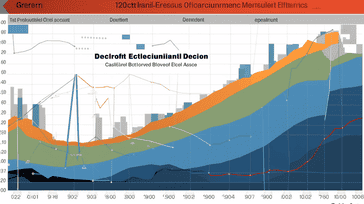
Growing concerns about climate change and the impact of human activity on the environment have led to a surge in interest in sustainable finance. As more investors recognize the importance of supporting environmentally conscious businesses, the field of green investing has emerged as a popular and profitable investment option.
In this section, we will explore the latest financial news and trends in sustainable finance, with a particular focus on green investing. We will examine the various investment strategies and products available, as well as the potential long-term impact of sustainable finance on the global economy.
Key Takeaways
- Green investing is a growing sector of sustainable finance
- Investors are increasingly interested in supporting environmentally friendly businesses
- The field of sustainable finance offers a range of investment strategies and products
- The impact of sustainable finance on the global economy is likely to be significant
- Keeping up with the latest financial news is crucial for those interested in green investing and sustainable finance
Understanding Green Investing
Green investing is a type of investment that focuses on companies, projects, and initiatives that promote environmental sustainability. It is a subset of sustainable finance, which takes into account not only financial returns but also social and environmental impacts.
Green investments can take many forms, such as renewable energy projects, sustainable agriculture, green buildings, and clean technology. By investing in these areas, individuals and institutions can support the transition to a low-carbon, resource-efficient economy while potentially earning a return on their investment.
One of the main reasons why green investing is becoming increasingly popular is the growing awareness of climate change and the need to reduce greenhouse gas emissions. Governments, companies, and consumers are all placing greater emphasis on sustainability, which is creating new opportunities in the financial market.
Another factor driving the growth of green investing is the potential for long-term returns. As the world shifts towards a more sustainable future, companies that operate in environmentally responsible ways are likely to be more resilient and better positioned to succeed in the long run.
If you're interested in green investing, it's important to do your research and understand the risks and opportunities involved. Look for investments that align with your values and financial goals, and consider consulting with a financial advisor who specializes in sustainable finance.
The Rise of Sustainable Finance

The financial world is increasingly recognizing the importance of sustainable finance. Sustainable finance is defined as "any form of financial service that integrates environmental, social, and governance (ESG) criteria into the business or investment decisions for the lasting benefit of both clients and society at large."
Sustainable finance has been on the rise in recent years due to several factors. One of the most significant drivers is growing awareness of the pressing environmental and social issues facing our planet. Many investors are seeking to align their investments with their personal values and are looking for ways to support sustainable initiatives.
Another key factor is the potential for sustainable finance to provide long-term value. Companies that prioritize ESG factors often outperform their peers financially, as they are better able to manage risks and capitalize on opportunities. In fact, studies have shown that companies with strong ESG performance are more likely to achieve long-term success and generate higher shareholder value.
Furthermore, sustainable finance is becoming an increasingly mainstream option for investors. More and more financial institutions are offering sustainable investment products, such as green bonds and ESG funds, making it easier for investors to support sustainable initiatives.
"Sustainable finance can help unlock substantial benefits for society, the environment, and the economy."
The Impact of Sustainable Finance
The impact of sustainable finance is far-reaching, and it has the potential to drive positive change globally. For instance, sustainable finance can help catalyze green innovation, finance the transition to a low-carbon economy, and promote inclusive economic growth.
It can also help address pressing social issues, such as poverty, inequality, and access to basic services like healthcare and education. By allocating capital to companies and projects that prioritize sustainability, sustainable finance can help create a more equitable and sustainable future for all.
The Future of Sustainable Finance
The future of sustainable finance looks promising. Sustainable finance is expected to continue growing in popularity, driven by increasing demand from investors and regulatory support. Several countries and organizations have already introduced initiatives to promote sustainable finance, including the European Union's Sustainable Finance Action Plan and the United Nations' Sustainable Development Goals.
Looking ahead, sustainable finance will likely play an even greater role in shaping the financial landscape. It has the potential to unlock substantial benefits for society, the environment, and the economy. As such, staying informed about the latest developments and trends in sustainable finance is crucial for anyone seeking to align their investments with their values.
Emerging Trends in Green Investing
In the rapidly-changing landscape of sustainable finance, keeping up with the latest trends in green investing is essential. Here are some of the most significant developments and advancements that have emerged in recent months:
1. Growth in Sustainable Funds
Sustainable funds, which invest in companies that have positive environmental or social impact, have seen significant growth in recent years. In 2020, sustainable funds attracted a record-breaking $51.1 billion in net inflows, according to Morningstar. This trend is expected to continue in the coming years as more investors seek to align their investments with their values.
2. Increased Focus on Diversity and Inclusion
Many investors are now paying close attention to companies' diversity, equity, and inclusion (DEI) practices. Research has shown that companies with more diverse leadership teams tend to outperform their peers, making DEI a critical factor in investment decisions. As a result, many asset managers are incorporating DEI considerations into their investment strategies.
3. Rise of ESG Investing
Environmental, social, and governance (ESG) factors are increasingly being incorporated into investment decisions. ESG investing takes a more holistic approach to evaluating companies, taking into account their impact on the environment, society, and governance practices. This approach has gained popularity among investors, with assets under management in ESG funds reaching $1.7 trillion in 2020, according to Morningstar.
4. Expansion of Green Bonds
Green bonds, which are used to finance environmentally friendly projects, have grown in popularity as more investors seek to support sustainable initiatives. In 2020, the global green bond market reached a record $269.5 billion, according to the Climate Bonds Initiative. This trend is expected to continue as governments and corporations look to finance their sustainability efforts.
5. Increasing Focus on Climate Change
The urgency of addressing climate change has become more apparent in recent years, and investors are taking note. Many are now incorporating climate-related risks and opportunities into their investment decisions. For example, some investors are divesting from fossil fuel companies and investing in renewable energy instead. Others are engaging with companies to encourage them to adopt more sustainable practices.
6. Innovation in Sustainable Finance
Green investing is a rapidly evolving field, with new technologies and approaches constantly emerging. Some innovative examples include:
| Technology/Approach | Description |
|---|---|
| Carbon offsetting platforms | Online platforms that allow individuals and companies to purchase carbon offsets to mitigate their carbon footprint. |
| Blue bonds | Bonds issued to finance projects that protect the ocean and its resources. |
| Green mortgages | Mortgages that offer lower interest rates for energy-efficient homes. |
These are just a few examples of the many innovative solutions that are emerging in the field of green investing.
By staying informed about these emerging trends, investors can ensure that their portfolios are aligned with their values and are well-positioned for the future.
Impact Investing for a Better Future

Impact investing is a type of sustainable finance that aims to generate a positive social and environmental impact alongside financial returns. It allows investors to support projects that align with their values and contribute to a better future.
There are different ways investors can implement impact investing strategies, such as investing in companies that promote renewable energy, sustainable agriculture, or affordable housing, among others. The key is to identify projects that have a meaningful impact and can generate financial returns.
Strategies within Impact Investing
There are several strategies within impact investing, including:
- Exclusionary screening: This approach involves excluding companies that do not meet certain environmental, social, or governance criteria from an investment portfolio. For example, an investor may choose to exclude companies that have a negative impact on the climate or violate human rights.
- Thematic investing: This approach involves investing in companies that are aligned with a specific theme or goal, such as reducing carbon emissions or promoting gender equality. It focuses on creating positive change in a particular area of interest.
- Impact measurement: This approach involves measuring and evaluating the social and environmental impact of the investments. It allows investors to track the progress and effectiveness of their impact investing strategies.
While impact investing is a relatively new concept, it is gaining traction as more investors prioritize sustainability and social responsibility. According to the Global Impact Investing Network, the impact investing market grew from $228 billion in assets under management in 2017 to $502 billion in 2019.
Impact Investing Sectors
There are different sectors within impact investing, including:
| Sector | Description |
|---|---|
| Renewable energy | Investing in companies that develop and produce renewable energy sources, such as solar or wind power. |
| Sustainable agriculture | Investing in companies that promote sustainable farming practices, such as organic farming or regenerative agriculture. |
| Impact real estate | Investing in real estate projects that have a positive impact on the environment or the community, such as affordable housing or green buildings. |
Impact investing offers the opportunity to align financial goals with social and environmental values. It empowers individuals and organizations to make a positive impact on the world while generating returns.
ESG Investing: Environment, Social, and Governance Factors
ESG investing is a method of assessing the sustainability and ethical impact of an investment in addition to its potential financial return. The acronym stands for Environmental, Social, and Governance, representing the three key factors analyzed in ESG investing.
Environmental factors relate to a company's impact on the natural world, including its carbon footprint, use of resources, and waste management practices. Social factors consider a company's impact on society, such as its labor practices, diversity and inclusion policies, and community engagement. Governance factors focus on the internal management of a company, including executive compensation, board diversity, and transparency in financial reporting.
ESG investing is gaining popularity as investors increasingly prioritize companies with strong sustainability practices and ethical values. In fact, ESG funds have seen a significant increase in assets under management in recent years, reaching over $1 trillion globally as of 2020.
One key benefit of ESG investing is the potential for long-term financial performance. Studies have shown that companies with strong ESG ratings tend to outperform their peers over time. Additionally, ESG investing can help diversify a portfolio while aligning with an investor's personal values and social impact objectives.
Examples of ESG Investing
ESG investing can take many different forms, but some common strategies include:
- Exclusionary screening: Avoiding investments in companies that do not meet certain ESG criteria.
- Thematic investing: Focusing on specific ESG themes, such as renewable energy or sustainable agriculture.
- Impact measurement: Evaluating the social and environmental impact of an investment alongside financial performance.
Many ESG funds also incorporate active shareholder engagement, using their positions as investors to advocate for positive change within companies.
ESG Investing in Sustainable Finance
ESG investing is a fundamental aspect of sustainable finance, which seeks to integrate environmental, social, and governance factors into financial decision-making. Sustainable finance aims to promote long-term sustainability while generating returns for investors.
ESG investing can be an important tool for achieving sustainable finance goals. By prioritizing companies with strong ESG practices, investors can incentivize sustainable behavior and encourage companies to adopt more responsible practices over time.
Overall, ESG investing is a growing trend in sustainable finance, providing investors with a way to align their financial goals with their personal values and social impact objectives.
Green Bonds and Sustainable Debt

Green bonds and sustainable debt are innovative financial instruments that enable investors to support environmentally friendly projects while earning a return. These investments are becoming increasingly popular as more companies and governments embrace sustainability and commit to reducing their carbon footprint.
Green bonds are debt securities that raise capital specifically for climate and environmental projects. The proceeds are used to fund projects like renewable energy, energy efficiency, and clean transportation. These bonds are designed to be transparent, with clear guidelines on how the funds will be used and how the impact will be measured.
In contrast, sustainable debt is a broader category that includes a variety of financial instruments, such as green loans, sustainability-linked bonds, and social bonds. The common denominator is that these investments are used to support sustainable projects and initiatives that contribute to a more equitable and resilient future.
According to the latest financial news articles, green bonds and sustainable debt are gaining traction in the financial market. In fact, the global issuance of green bonds has increased significantly over the past few years, from $42 billion in 2015 to over $269 billion in 2020. This growth is expected to continue, with analysts predicting that the market could reach $1 trillion by 2023.
| Advantages of Green Bonds and Sustainable Debt | Disadvantages of Green Bonds and Sustainable Debt |
|---|---|
|
|
Despite the potential drawbacks, green bonds and sustainable debt are viewed as a promising path for investors who want to align their financial goals with their social and environmental values. As sustainable finance continues to gain momentum, these investments are likely to play a significant role in shaping the future of the financial market.
Renewable Energy Investments
If you're looking to invest in a rapidly growing and impactful industry, renewable energy might be just the opportunity you've been seeking. Renewable energy investments refer to investments in clean energy technologies, such as solar, wind, and hydro power, as well as energy efficiency and storage solutions.
Renewable energy investments offer several benefits, including the potential for high returns and the opportunity to support a sustainable future. According to the International Energy Agency, renewable energy capacity grew more in 2020 than in any other year, despite the global pandemic. Furthermore, renewable energy is now often cheaper than fossil fuels in many parts of the world.
Renewable Energy Investment Opportunities
There are several ways to invest in renewable energy, including:
- Buying stocks in renewable energy companies
- Investing in exchange-traded funds (ETFs) that focus on renewable energy
- Participating in crowdfunding projects that support renewable energy
- Investing in renewable energy infrastructure projects
It's essential to do your research before making any investments and to ensure that you understand the risks associated with each investment option.
The Future of Renewable Energy Investments
The renewable energy sector is expected to continue growing as countries around the world aim to reduce their carbon emissions and transition to more sustainable energy sources. According to a report by the Institute for Energy Economics and Financial Analysis, renewable energy investments are projected to overtake investments in fossil fuels by the end of this decade.
The transition to renewable energy is also creating new job opportunities and contributing to economic growth. The U.S. Bureau of Labor Statistics predicts that employment in the renewable energy sector will grow faster than average through 2029.
The Bottom Line
Renewable energy investments offer the potential for high returns and the opportunity to support a sustainable future. As renewable energy technologies become more prevalent and cost-effective, it's likely that renewable energy investments will continue to grow in popularity and significance.
Sustainable Investment Strategies
Investors today have an increasing number of sustainable investment strategies to choose from. These strategies are designed to align financial objectives with social and environmental goals. Here are some of the most popular sustainable investment strategies:
Exclusionary Screening
Exclusionary screening involves excluding companies from an investment portfolio based on their involvement in certain industries or practices that are considered harmful to society or the environment. For example, an investor might avoid companies that produce tobacco or weapons.
Thematic Investing
Thematic investing involves investing in companies that are aligned with a specific theme or trend, such as renewable energy or sustainable agriculture. This strategy allows investors to focus on areas of the market that they believe are poised for growth while supporting companies that align with their values.
Impact Measurement
Impact measurement involves evaluating the social and environmental impact of an investment portfolio. Investors can use metrics such as carbon footprint or social impact to assess the positive or negative impact of their investments.
By incorporating sustainable investment strategies into their portfolios, investors can support companies that prioritize sustainability while potentially generating strong financial returns.
The Global Impact of Sustainable Finance
As sustainable finance continues to gain momentum, its impact is extending far beyond national borders. Today, sustainable finance is a global movement that is transforming economies, industries, and policies across the world.
The influence of sustainable finance can be seen in the proliferation of international initiatives aimed at promoting sustainability. For example, the United Nations-backed Principles for Responsible Investment (PRI) has over 3,000 signatories representing over $100 trillion in assets under management. These signatories commit to integrating environmental, social, and governance (ESG) factors into their investment decisions.
Moreover, countries around the world are implementing sustainable policies to support green investments and transition to a low-carbon economy. In Europe, for instance, the European Green Deal aims to make the continent climate-neutral by 2050 and has allocated €1 trillion to support sustainable investments. Similarly, China's ambitious goal to peak carbon emissions by 2030 and achieve carbon neutrality by 2060 presents a significant opportunity for green investments in the world's second-largest economy.
The rise of sustainable finance is also creating new business opportunities for financial institutions, asset managers, and other stakeholders. A recent report by the Global Sustainable Investment Alliance revealed that sustainable investments in Europe, the United States, Canada, Japan, and Australia/New Zealand reached $35.3 trillion at the start of 2020, representing a 15% increase since 2018.
Innovative Sustainable Finance Initiatives
Some innovative sustainable finance initiatives include:
| Initiative | Description |
|---|---|
| Sustainable Development Investment Partnership (SDIP) | A partnership between the World Economic Forum, the Organization for Economic Co-operation and Development (OECD), and the Global Infrastructure Hub (GIH) that aims to increase private investment in sustainable infrastructure in developing countries. |
| Green Climate Fund (GCF) | An international fund established under the United Nations Framework Convention on Climate Change (UNFCCC) to support developing countries in their efforts to address climate change. |
| Sustainable Ocean Fund | A private equity fund that invests in sustainable fisheries, aquaculture, and ocean-based renewable energy. The fund aims to promote sustainable economic growth while preserving the health of the ocean. |
The impact of sustainable finance is clear, and it is paving the way for a more sustainable future. As sustainable finance continues to evolve, its potential to drive positive change on a global scale is limitless.
Investing for a Sustainable Future
Investing for a sustainable future is not just about generating financial returns; it's about creating positive impact for society and the environment. With daily financial news covering the latest developments in the financial market, it's important to stay informed about the growing opportunities in sustainable finance.
Investing in sustainable companies can prove to be a smart financial move, as they often have strong long-term growth prospects due to their focus on responsible business practices. Additionally, conscious investors can drive positive change by rewarding these companies with their investments.
Individuals can also align their values with their investments through sustainable investment strategies. Exclusionary screening allows investors to exclude companies involved in activities that conflict with their values, while thematic investing focuses on investing in companies that align with a specific sustainability theme, such as renewable energy or clean water. Impact measurement strategies quantify the social and environmental impact of investments.
How Businesses and Governments Can Drive Sustainable Investing
Businesses and governments can also play a crucial role in driving sustainable investing. Companies can prioritize sustainability initiatives and report on their environmental, social, and governance (ESG) performance to attract conscious investors. Governments can create policies and regulations that incentivize sustainable practices and investments, such as tax credits for renewable energy projects.
The demand for sustainable investments is growing rapidly, with daily financial news showing a surge in interest from both individual and institutional investors. By investing in a sustainable future, we can create a better world for ourselves and future generations.
Conclusion
In conclusion, staying informed about breaking financial news is crucial, especially in the growing field of green investing and sustainable finance. As the world moves towards a more sustainable future, investors need to adapt their strategies to align with environmental, social, and governance factors.
Green investing is no longer a niche market, and its significance is only going to grow in the coming years. With emerging trends such as impact investing, ESG investing, green bonds, and renewable energy investments, investors have a plethora of options to invest in a sustainable future.
Financial news is constantly evolving, and individuals and businesses who stay informed will be better equipped to make informed decisions for a financially and environmentally sustainable future.
Investing for a Better Future
By investing in sustainable finance, not only can you achieve your financial goals, but you can also make a positive impact on the world. Whether it's investing in renewable energy, supporting social impact initiatives, or promoting good governance, sustainable finance presents a unique opportunity to align your values with your investment decisions.
Breaking financial news and market trends can shape your investment strategy, helping you to stay ahead of the curve. So, keep an eye on the latest financial news and be a part of the movement towards a better, more sustainable future.
FAQ
What is green investing?
Green investing refers to the practice of investing in companies or projects that promote environmental sustainability and have a positive impact on the planet. It involves putting your money into renewable energy, clean technology, and other eco-friendly ventures.
Why is green investing important?
Green investing is important because it supports the transition to a more sustainable and low-carbon future. By investing in environmentally friendly businesses, you can contribute to combating climate change, reducing pollution, and promoting a healthier planet for future generations.
What are the different types of green investments?
There are several types of green investments, including renewable energy projects, energy-efficient buildings, sustainable agriculture, clean transportation, and green technology. These investments focus on industries that promote environmental sustainability and have a positive impact on the planet.
How can I start green investing?
To start green investing, you can research and choose from various green investment funds, exchange-traded funds (ETFs), or individual stocks that align with your sustainability goals. It's important to do your due diligence and consider factors like the company's environmental practices, financial performance, and long-term prospects.
Can green investing be profitable?
Yes, green investing can be profitable. Many sustainable companies and projects have shown strong financial performance and growth potential. As the demand for environmentally friendly products and services continues to rise, green investments have the potential to generate attractive returns while promoting a more sustainable future.
Are there any risks involved in green investing?
Like any investment, green investing carries certain risks. Factors such as regulatory changes, technological advancements, and market fluctuations can impact the performance of green investments. It's important to diversify your portfolio, conduct thorough research, and seek professional advice to mitigate risks.







